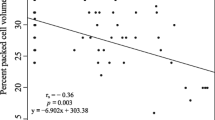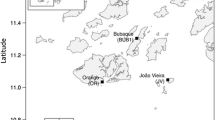Abstract
Selenium (Se) is an essential element that can be harmful for wildlife. However, its toxicity in poikilothermic amniotes, including turtles, remains poorly investigated. The present study aims at identifying selenium toxicokinetics and toxicity in juvenile slider turtles (age: 7 months), Trachemys scripta, dietary exposed to selenium, as selenomethionine SeMet, for eight weeks. Non-destructive tissues (i.e. carapace, scutes, skin and blood) were further tested for their suitability to predict selenium levels in target tissues (i.e. kidney, liver and muscle) for conservation perspective. 130 juvenile yellow-bellied slider turtles were assigned in three groups of 42 individuals each (i.e. control, SeMet1 and SeMet2). These groups were subjected to a feeding trial including an eight-week supplementation period SP 8 and a following 4-week elimination period EP 4 . During the SP8, turtles fed on diet containing 1.1 ± 0.04, 22.1 ± 1.0 and 45.0 ± 2.0 µg g−1 of selenium (control, SeMet1 and SeMet2, respectively). During the EP4, turtles fed on non-supplemented diet. At different time during the trial, six individuals per group were sacrificed and tissues collected (i.e. carapace, scutes, skin, blood, liver, kidney, muscle) for analyses. During the SP8 (Fig. 1), both SeMet1 and SeMet2 turtles efficiently accumulated selenium from a SeMet dietary source. The more selenium was concentrated in the food, the more it was in the turtle body but the less it was removed from their tissues. Moreover, SeMet was found to be the more abundant selenium species in turtles’ tissues. Body condition (i.e. growth in mass and size, feeding behaviour and activity) and survival of the SeMet1 and SeMet2 turtles seemed to be unaffected by the selenium exposure. There were clear evidences that reptilian species are differently affected by and sensitive to selenium exposure but the lack of any adverse effects was quite unexpected.

Design of the feeding trial. T, Time of tissues collection in weeks. The feeding trial included a supplementation period of 8 weeks (i.e. SP8) followed by an elimination period of 4 weeks (i.e. EP4). Six turtles from each turtle group (i.e. control, SeMet1 and SeMet2) were sacrifice at each collection time, from T1 to T12. At T0, four turtles were sacrificed




Similar content being viewed by others
References
Albers PH, Green DE, Sanderson CJ (1996) Diagnostic criteria for selenium toxicosis in aquatic birds: dietary exposure, tissue concentrations and macroscopic effects. J Wildl Dis 32:468–485
Bergeron CM, Husak JF, Unrine JM et al (2007) Influence of feeding ecology on blood mercury concentrations in four species of turtles. Environ Toxicol Chem 26:1733–1741
Dumont E, Vanhaecke F, Cornelis R (2006) Selenium speciation from food source to metabolites: a critical review. Anal Bioanal Chem 385:1304–1323
Dyc C, Covaci A, Debier C et al (2015) Pollutant exposure in green and hawksbill marine turtles from the Caribbean region. Reg Stud Mar Sci 2:158–170. doi:10.1016/j.rsma.2015.09.004
Fan TWM, Higashi RM, Lane AN (1998) Biotransformations of selenium oxyanion by filamentous cyanophyte-dominated mat cultured from agricultural drainage waters. Environ Sci Technol 32:3185–3193
Fan T, Teh S, Hinton D, Higashi R (2002) Selenium biotransformations into proteinaceous forms by foodweb organisms of selenium-laden drainage waters in California. Aquat Toxicol 57:65–84. doi:10.1016/S0166-445X(01)00261-2
Far J, Dyc C, Das K, Eppe G (2016) Development of an analytical strategy to measure major selenium-containing species in juvenile turtles (Trachemys scripta scripta) by SAX-HPLC-ICP MS (submitted)
Franson JC, Hoffman DJ, Wells-Berlin A et al (2007) Effects of dietary selenium on tissue concentrations, pathology, oxidative stress, and immune function in common eiders (Somateria mollissima). J Toxicol Environ Heal Part A 70:861–874
Ganser LR, Hopkins WA, O’Neil L et al (2003) Liver histopathology of the Southern Watersnake, Nerodia fasciata fasciata, following chronic exposure to trace element-contaminated prey from a coal ash disposal site. J Herpetol 37:219–226
Guirlet E, Das K, Girondot M (2008) Maternal transfer of trace elements in leatherback turtles (Dermochelys coriacea) of French Guiana. Aquat Toxicol 88:88–267. doi:10.1016/j.aquatox.2008.05.004
Heinz GH (1993) Selenium accumulation and loss in mallard eggs. Environ Toxicol Chem 12:775–778
Heinz GH, Hoffman DJ, Gold LG (1988) Toxicity of organic and inorganic selenium to mallard ducklings. Arch Environ Contam Toxicol 17:561–568
Heinz GH, Pendleton GW, Krynitsky AJ, Gold LG (1990) Selenium accumulation and elimination in mallards. Arch Environ Contam Toxicol 19:374–379
Hoffman DJ (2002) Role of selenium toxicity and oxidative stress in aquatic birds. Aquat Toxicol 57:27–37
Hoffman DJ, Heinz GH, Krynitsky AJ (1989) Hepatic glutathione metabolism and lipid peroxidation in response to excess dietary selenomethionine and selenite in mallard ducklings. J Toxicol Environ Health 27:263–271
Hoffman DJ, Heinz GH, LeCaptain LJ et al (1996) Toxicity and oxidative stress of different forms of organic selenium and dietary protein in mallard ducklings. Arch Environ Contam Toxicol 31:120–127
Hopkins WA, Rowe CL, Congdon JD et al (1999) Elevated trace element concentrations and standard metabolic rate in banded water snakes (Nerodia fasciata) exposed to coal combustion wastes. Environ Toxicol Chem 18:1258–1263
Hopkins WA, Roe JH, Snodgrass JW et al (2001) Nondestructive indices of trace element exposure in squamate reptiles. Environ Pollut 115:1–7
Hopkins WA, Roe JH, Snodgrass JW et al (2002) Effects of chronic dietary exposure to trace elements on banded water snakes (Nerodia fasciata). Environ Toxicol Chem 21:906–913
Hopkins WA, Staub BP, Baionno JA et al (2004) Trophic and maternal transfer of selenium in brown house snakes (Lamprophis fuliginosus). Ecotoxicol Environ Saf 58:285–293
Hopkins WA, Snodgrass JW, Baionno JA et al (2005a) Functional relationships among selenium concentrations in the diet, target tissues, and nondestructive tissue samples of two species of snakes. Environ Toxicol Chem 24:344–351
Hopkins WA, Staub BP, Baionno JA et al (2005b) Transfer of selenium from prey to predators in a simulated terrestrial food chain. Environ Pollut 134:447–456
Hopkins BC, Willson JD, Hopkins WA (2013) Mercury exposure is associated with negative effects on turtle reproduction. Environ Sci Technol 47:2416–2422
Janz DM, DeForest DK, Brooks PM et al (2010) Selenium toxicity to aquatic organisms. SETAC and CRC Press, Pensacola, pp 141–231
Lam JCW, Tanabe S, Chan SKF et al (2006) Levels of trace elements in green turtle eggs collected from Hong Kong: evidence of risks due to selenium and nickel. Environ Pollut 144:790–801
Moroder L (2005) Isosteric replacement of sulfur with other chalcogens in peptides and proteins. J Pept Sci 11:187–214
Oster O, Prellwitz W (1990) The renal excretion of selenium. Biol Trace Elem Res 24:119–146
Perrault JR, Miller DL, Garner J, Wyneken J (2013) Mercury and selenium concentrations in leatherback sea turtles (Dermochelys coriacea): population comparisons, implications for reproductive success, hazard quotients and directions for future research. Sci Total Environ 463–464:61–71
Reilly C (2006) Selenium metabolism. Selenium Food Heal. Springer, New York, pp 43–66
Rich CN, Talent LG (2009) Soil ingestion may be an important route for the uptake of contaminants by some reptiles. Environ Toxicol Chem 28:311–315
Roe JH, Hopkins WA, Baionno JA et al (2004) Maternal transfer of selenium in Alligator mississippiensis nesting downstream from a coal-burning power plant. Environ Toxicol Chem 23:1969–1972
Schrauzer GN (2000) Selenomethionine: a review of its nutritional significance, metabolism and toxicity. J Nutr 130:1653–1656
Singh A, Nocerino J (2002) Robust estimation of mean and variance using environmental data sets with below detection limit observations. Chemom Intell Lab Syst 60:69–86
Sparling DW, Linder G, Bishop CA, Krest SK (2010) Recent advancements in amphibians and reptile toxicology. In: Chapman PM, Chapman P, Adams WJ et al (eds) Ecological assessment of selenium in the aquatic environment. SETAC Press, Pensacola, pp 1–11
Tashjian DH, Teh SJ, Sogomonyan A, Hung SSO (2006) Bioaccumulation and chronic toxicity of dietary L-selenomethionine in juvenile white sturgeon (Acipenser transmontanus). Aquat Toxicol 79:401–409
van de Merwe JP, Hodge M, Olszowy HA et al (2009) Chemical contamination of green turtle (Chelonia mydas) eggs in Peninsular Malaysia: implications for conservation and public health. Environ Health Perspect 117:1397–1401
van de Merwe JP, Hodge M, Olszowy HA et al (2010) Using blood samples to estimate persistent organic pollutants and metals in green sea turtles (Chelonia mydas). Mar Pollut Bull 60:579–588
Wang Y, Zhan X, Zhang X et al (2011) Comparison of different forms of dietary selenium supplementation on growth performance, meat quality, selenium deposition, and antioxidant property in broilers. Biol Trace Elem Res 143:261–273
Windisch W (2002) Interaction of chemical species with biological regulation of the metabolism of essential trace elements. Anal Bioanal Chem 372:421–425
Wisniak J (2000) Jöns Jacob Berzelius: a guide to the perplexed chemist. Chem Educ 5:343–350
Young TF, Finley K, Adams WJ et al (2010) What you need to know about selenium. SETAC and CRC Press, Pensacola, pp 7–45
Acknowledgments
The present project was supported by the F.R.I.A, F.R.S.-FNRS and ULg (Conseil Sectoriel de la Recherche). K. Das is a F.R.S.-FNRS Research Associate. Authors wish to thank Prof. D. Marlier (Veterinary Faculty, ULg) and Dr. F. Finet (Department of Astrophysics, Geophysics and Oceanography – ULg) for their support and advice. We also thank L. Lognay and R. Biondo (Laboratory of Oceanology, University of Liège, Belgium) for their help in sample preparation. This is a MARE publication 322.
Author information
Authors and Affiliations
Corresponding author
Ethics declarations
Conflict of interest
The authors declare that they have no conflict of interest.
Additional information
Christelle Dyc and Johann Far have contributed equally to this work.
Electronic supplementary material
Below is the link to the electronic supplementary material.
Rights and permissions
About this article
Cite this article
Dyc, C., Far, J., Gandar, F. et al. Toxicokinetics of selenium in the slider turtle, Trachemys scripta . Ecotoxicology 25, 727–744 (2016). https://doi.org/10.1007/s10646-016-1632-z
Accepted:
Published:
Issue Date:
DOI: https://doi.org/10.1007/s10646-016-1632-z




